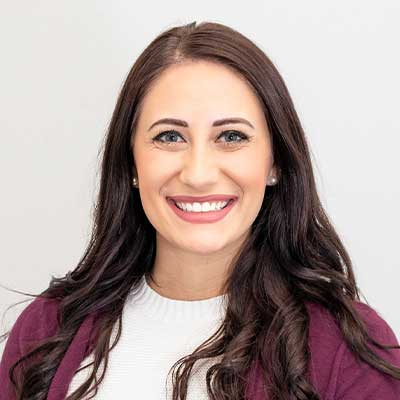
Struggling with chronic eye discomfort, redness, or blurred vision? Our expert eye care team specializes in the advanced diagnosis and medical management of ocular surface disease, offering personalized treatment plans to relieve symptoms and restore comfort.
Whether you’re dealing with severe dry eye, inflammation, or corneal complications, we utilize cutting-edge technology and evidence-based care to improve your eye health and quality of life. Trust us to help you see clearly and comfortably again.

What is Ocular Surface Disease, and What Causes It?

Ocular Surface Disease (OSD) refers to a group of conditions that affect the surface of the eye, including the cornea, conjunctiva, and tear film. It often results in symptoms like dryness, irritation, redness, blurry vision, and a gritty sensation.
Common causes include dry eye syndrome, meibomian gland dysfunction, allergic reactions, infections, and autoimmune disorders such as Sjögren’s syndrome. Environmental factors like prolonged screen time, low humidity, contact lens wear, and certain medications can also contribute to OSD.
Left untreated, it can impact vision and eye comfort significantly, making early diagnosis and management essential.
Offering the Most Advanced Techology Today for Treatment of OSD
At our clinic, we invest in some of the most advanced eye care technology available today to ensure precise diagnosis and effective treatment. These innovations allow us to detect issues earlier, customize care plans, and monitor progress with exceptional accuracy.
By staying at the forefront of eye care advancements, we help our patients achieve the clearest, most comfortable vision possible—supporting their daily lives with healthier eyes and long-term visual wellness.

In-Depth Tear Gland and Functional Dry Eye Assessment
We offer advanced testing and assessment of tear gland function and dry eyes, using cutting-edge technology such as:
-
Oculus Keratograph 5M
This advanced imaging tool evaluates tear film quality, meibomian gland health, and corneal irregularities, allowing for comprehensive, non-invasive diagnosis of dry eye and ocular surface disease.
-
TearLab
Our team uses this technology to measure tear osmolarity—an essential marker of dry eye disease—providing quick, reliable results that help guide targeted treatment and monitor patient response to therapy over time.
-
Inflammadry
This tool is used to detect elevated MMP-9 levels, a key marker of inflammation in dry eye disease, enabling early intervention and more effective, personalized treatment strategies for managing ocular surface inflammation.
Dry Eye and Aesthetics Treatments
Treatments we offer at our Aurora eye clinic include:
-
IPL (Intense Pulsed Light)
IPL therapy uses light pulses to reduce inflammation and improve meibomian gland function in dry eye patients. It also enhances skin tone and texture for aesthetic rejuvenation.
-
Radiofrequency
Radiofrequency gently heats the eyelid area, stimulating collagen production and unclogging meibomian glands. This improves tear flow and tightens skin, offering both dry eye relief and cosmetic benefits.
-
LipiFlow
LipiFlow combines heat and gentle pressure to clear blocked meibomian glands. This in-office treatment restores natural oil flow to the tear film, providing lasting relief from evaporative dry eye.
-
BlephEx
BlephEx is a handheld device that exfoliates the eyelid margins, removing bacteria, biofilm, and debris. It treats blepharitis and enhances overall eyelid hygiene, reducing inflammation and improving tear quality.
-
ZEST
ZEST (Zocular Eyelid System Treatment) uses a natural okra-based gel to deep-clean eyelids, removing oil, debris, and contaminants. It’s gentle yet effective for managing dry eye and eyelid inflammation.
Medical Management of Ocular Surface Disease
We offer the following technologies for superior medical management of your OSD:
-
Amniotic Membranes
Amniotic membranes promote healing of the ocular surface by reducing inflammation and scarring. Used in moderate to severe cases, they support corneal regeneration and enhance patient comfort during recovery.
-
Punctal Plugs
Punctal plugs are tiny inserts placed in the tear ducts to retain moisture on the eye's surface. They help relieve dryness by preventing tear drainage, improving hydration and comfort.
-
Rx Drops
Prescription eye drops, including anti-inflammatories and immunomodulators, target the root causes of ocular surface disease. These medications help reduce symptoms, control inflammation, and support long-term eye health and comfort.
-
Serum Tears
Serum tears are custom-made eye drops derived from a patient’s own blood serum. Rich in growth factors and nutrients, they promote healing and relief in severe dry eye and ocular damage.
-
At-Home Therapies
At-home treatments like warm compresses, lid scrubs, omega-3 supplements, and humidifiers support daily management of ocular surface disease, helping maintain tear stability and reduce flare-ups between office visits.
Ocular Surface Disease FAQs
Yes, if left untreated, OSD can lead to chronic inflammation, corneal damage, and scarring, which may cause lasting vision impairment. Early diagnosis and consistent treatment significantly reduce the risk of long-term complications.
Symptoms like burning, tearing, light sensitivity, or frequent blinking may indicate OSD. A comprehensive eye exam, including specialized tests, helps confirm the diagnosis and determine the severity of the condition.
Dry eye is one type of OSD, but the term also includes other issues like blepharitis, allergic conjunctivitis, and corneal damage. Proper evaluation is necessary to identify the specific condition affecting your eye surface.
Follow-up frequency depends on your treatment plan and symptom severity. Initially, visits may be every few weeks, then transition to maintenance appointments every few months once the condition is better controlled.
Meet our Astigmatism Treatment Doctors
Your Ocular Surface Disease Doctor in Dallas

Meet our Eye Doctors

- Monday 9:00 am - 5:00 pm
- Tuesday 9:00 am - 5:00 pm
- Wednesday 9:00 am - 5:00 pm
- Thursday 9:00 am - 5:00 pm
- Friday 9:00 am - 5:00 pm
- Saturday Closed
- Sunday Closed
- VSP
- Spectera
- Eye Med
- Anthem
- AARP
- Blue Cross
- AARP Medicare Complete
- AAA
- Aetna
- AARP Medicare-Complete
- 1199 SEIU Funds
- Adventist Risk Management Inc.
- ASEBP
- 32BJ SEIU
- APWU Health Plan
- 20/20 Eyecare Network
- 44 North
- AFSCME Care Plan
- Absolute Total Care
- AFSCME
- Amalgamated Transit Union
- Alabama Public Health
- Alaska Medicaid
- Affinity Health Plan


